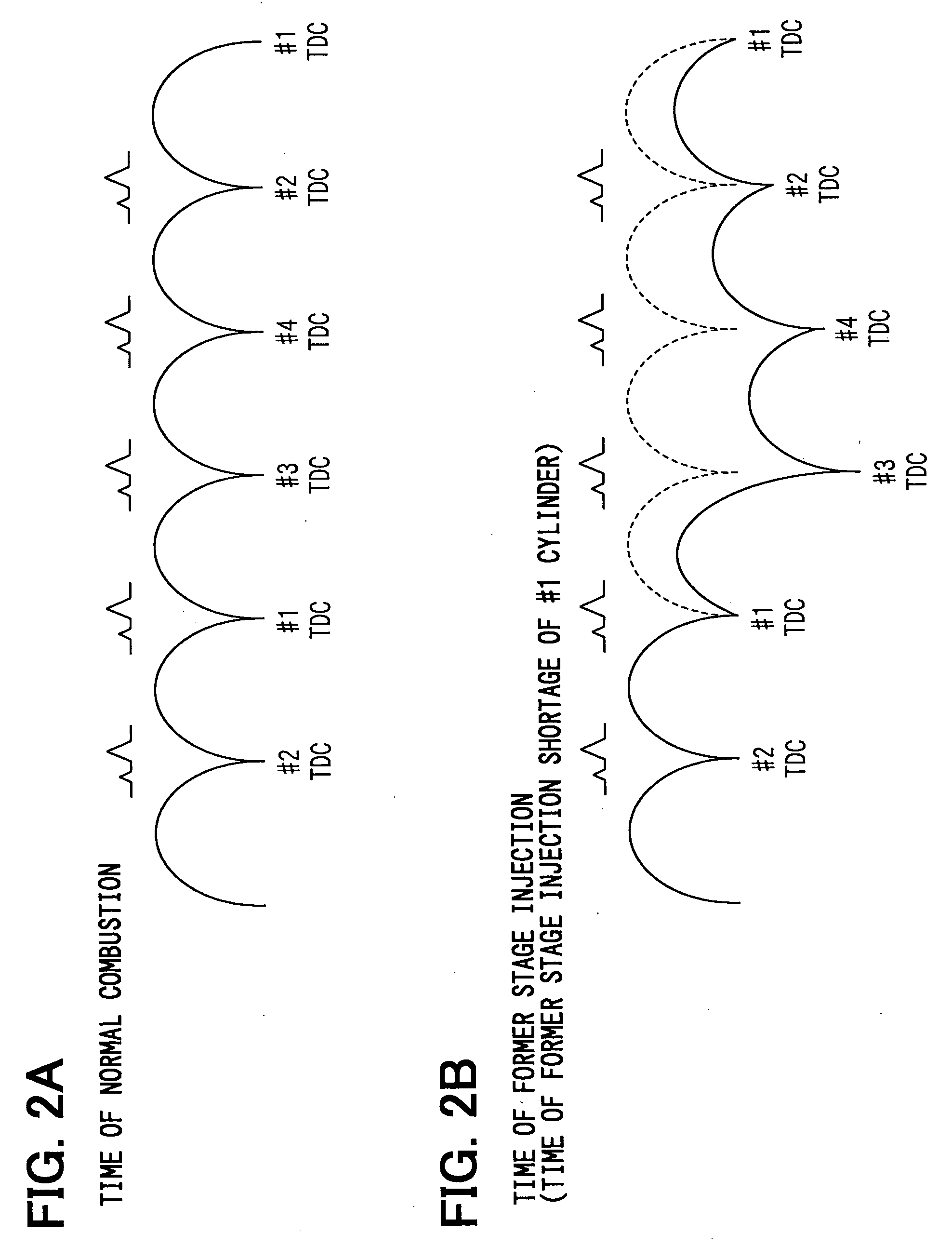Diesel engine control system
- Summary
- Abstract
- Description
- Claims
- Application Information
AI Technical Summary
Benefits of technology
Problems solved by technology
Method used
Image
Examples
first embodiment
[0030] A first embodiment, in which the present invention is implemented in a common rail type fuel injection system, will be described with reference to FIGS. 1 to 7. A basic structure of the common rail type fuel injection system will be described with reference to FIGS. 6 and 7.
[0031] The common rail type fuel injection system is a system, which injects fuel in, for example, a diesel engine 1. The common rail type fuel injection system includes a common rail 2, injectors 3, a supply pump 4, an ECU 5 (standing for an electric control unit and corresponding to a control device).
[0032] The engine 1 has a plurality of cylinders (cylinders #1-#4 in this particular instance), in each of which an intake stroke, a compression stroke, an expansion stroke and an exhaust stroke are continuously performed. In FIG. 6, although a four cylinder engine is depicted as an example of the engine 1, the engine 1 can be any other type of engine, in which the number of cylinders is other than four.
[...
second embodiment
[0106] In each of the following embodiments, the misfire sensing means 44 (the engine behavior sensing means 46 and the injection shortage determining means 47) is different from that of the first embodiment. Thus, in each of the following embodiments, the misfire sensing means 44 will be described. Furthermore, in each of the following embodiments, functional components, which are similar to those of the first embodiment, are indicated by the same numerals.
[0107] The misfire sensing means 44 of a second embodiment senses the misfire of the engine 1 based on a change in the exhaust gas temperature of the engine 1. Here, an exhaust gas temperature sensor (not shown), which is connected to an exhaust pipe of the engine 1, is used as the engine behavior sensing means 46.
[0108] When the shortage of the pilot flame generative injection occurs, fuel of the large heat generative injection is not combusted, resulting into the misfire. In such a case, the exhaust gas temperature at the tim...
third embodiment
[0111] The misfire sensing means 44 of a third embodiment senses the misfire of the engine 1 based on a change in an air-to-fuel ratio in the exhaust gas of the engine 1. Here, an air-to-fuel ratio sensor (a lambda sensor, such as an oxygen concentration sensor, not diagramatically depicted), which is connected to the exhaust pipe of the engine 1, is used as the engine behavior sensing means 46.
[0112] When the shortage (fuel shortage) of the pilot flame generative injection occurs, fuel of the large heat generative injection is not combusted, resulting into the misfire. In such a case, the oxygen concentration (A / F) at the time of occurrence of the misfire is increased in comparison to the oxygen concentration (A / F) of the other normal cylinders. The injection shortage determining means 47 of the third embodiment is a program, which senses such an increase of the oxygen concentration (A / F) to determine the misfired cylinder.
[0113] The technique for determining the misfired cylinde...
PUM
 Login to View More
Login to View More Abstract
Description
Claims
Application Information
 Login to View More
Login to View More - R&D
- Intellectual Property
- Life Sciences
- Materials
- Tech Scout
- Unparalleled Data Quality
- Higher Quality Content
- 60% Fewer Hallucinations
Browse by: Latest US Patents, China's latest patents, Technical Efficacy Thesaurus, Application Domain, Technology Topic, Popular Technical Reports.
© 2025 PatSnap. All rights reserved.Legal|Privacy policy|Modern Slavery Act Transparency Statement|Sitemap|About US| Contact US: help@patsnap.com



